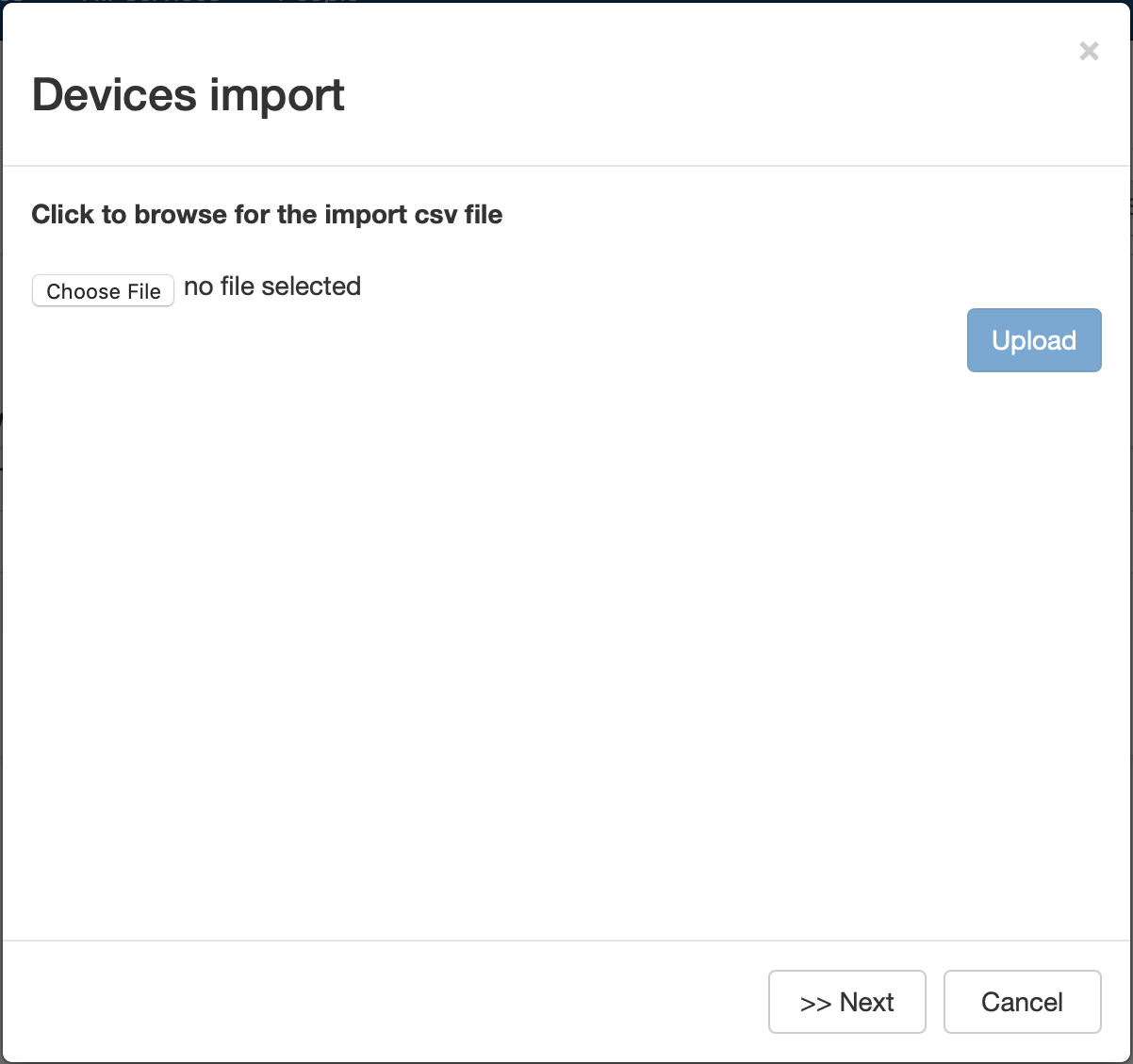Import and export devices using a CSV file
Device import and export is useful if you have a large number of devices to manage in your IDN deployment.
A .csv file is commonly used by spreadsheet programs and contains plain text data sets separated by commas with each row consisting of one or more fields.
To make the management of your devices easier, you can download a device import .csv
template from here, export and modify the existing device file, or create the file
yourself. A typical .csv file looks like the following
example:
hipservice_id,device_name,overlay_device_ip,overlay_device_ip_nat,mac_address,mac_lockdown
BHI@40130#35C1B68998D9,Local Workstation,192.168.59.101,,08:00:27:05:03:2e,FALSE
BHI@40130#4F6B8FD47B90,Local Workstation 2,192.168.59.102,,08:00:27:67:e6:6e,FALSEThe first line contains field names with each sucessive line containing data
corresponding to the fields.
- hipservice_id
- This is the UID of the HIPservice you want your devices to use. You can find this information in the UID field for the HIPservice in the Conductor.
- device_name
- A friendly name for the device.
- overlay_device_ip
- The IP address of the device.
- overlay_device_ip_nat
- (Optional) If your network topology requires you also use NAT you can enter the internal IP address here.
- mac_address
- (Optional) Enter the MAC address of your device. This field is required if you want to enable MAC lockdown (mac_lockdown=TRUE).
- mac_lockdown
- Enter TRUE if you require static addressing for the device, otherwise enter FALSE.

